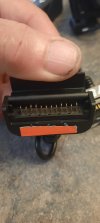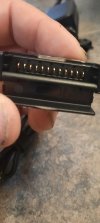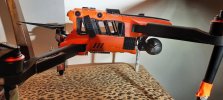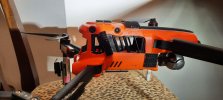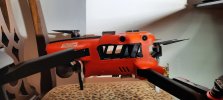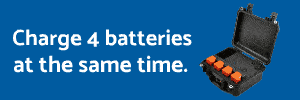You really are Too Far Gone, Mr Tufargon.I think your caps lock is stuck on and I think this is quite strange that you are the only person that has ever had this issue and to top it off 3 TIMES.
You are using an out of date browser. It may not display this or other websites correctly.
You should upgrade or use an alternative browser.
You should upgrade or use an alternative browser.
EVO 2 series Battery overheat, overheating, power failure
- Thread starter quinn karter
- Start date
Jagerbomb52
Well-Known Member
Be mindful of posting standards.You really are Too Far Gone, Mr Tufargon.
Thank you
Posting Standards
Community members should use the standard fonts available on the community software. The use of bold, large or colored fonts should be used sparingly. Posts containing inappropriate formatting will be removed or modified at our discretion (e.g. all caps or excessive color).
I contacted the FAA. The people I talked to are very concerned and are trying to find a department they will atempt to tackle this issue. BUT, they told me they do not have a policy regarding the airworthiness of UASs below 55lbs. They are going to try and investigate, but it's up in the air.
WHY AUTEL'S EVO 2 CONNECTORS ARE MELTING BETWEEN THE AIRCRAFT AND THE BATTERY.
When RC Battery connectors melt or overheat/ A PROOF OF CONCEPT.
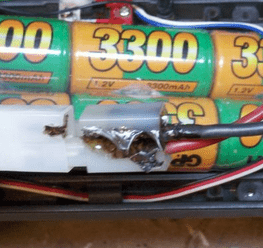
RC Battery connectors can get very hot and can even melt when too much current is flowing through them.
This often happens if you are using a powerful Motor/ESC system that draws a high current with connectors that are designed for stock motors and lower currents, such as Tamiya style connectors (pictured below).
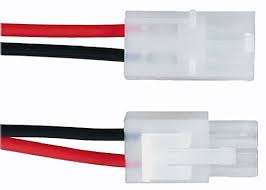
Tamiya Style Connectors (Low current battery connector)
Tamiya battery connectors often come fitted to Ni-Cad and Ni-Mh battery packs – especially in ready to run RC packages.
Upgrade to high current battery connectors
The best thing you can do is upgrade to high current battery connectors. A few examples of high current connectors are shown below: Deans (popular for rc cars), EC3, XT60 (both popular with rc planes) and Bullet / Banana type gold plated which are great for cars and easy to solder on.UNTIL AUTEL FIXES THEIR FINELY MANUFACTURED , BUT UNDERATED CURRENT CAPACITY PINS BETWEEN THEIR "SMART" BATTERY AND THE EVO 2 AIRCRAFT, SAVE YOUR MONEY.
John Hennessy
Well-Known Member
- Joined
- Sep 6, 2020
- Messages
- 51
- Reaction score
- 30
- Age
- 67
Hi Quinn,
As you know ,I have been looking at alternate batteries for our evo 2 uavs. The pins at the rear are big enough for the volts and also the amps that they are to carry. They appear to have step up buck converters for each ESC , this means that they don't have to supply heaps of power , as in volts and amps . I am trying to find there position in the system on either EUT main board 1 or 2 or 3 , all of which have a total of 5 main chip sets . This is how they are getting the longer flight times on a smaller battery. I think that you should have some one pull your batteries and charger plugs apart for polarity issues . In the paper work for registration for sale in the USA all of the electrical issues are well within spec , this is including there FCC 10 paper work for the MC2409A EVO 2 registration. If you have all the old damaged batteries special and chargers for each I would be getting an electronics engineer or similar to have a good look at them. To me the photos that you have posted show loose pin contacts causing excessive heat and sparking. But why on your 3, post the charger ends of each of the Drones battery chargers if you still have them and how you connect them to the batteries. You have said that they are OME but no photos, it could be a fulty charger , wrong polarity inside the end of the battery or even on the EVO. Pull it apart and look at the wiring behind the burnt out pins and trace them back. If you can not do it or afford it , go to a college and see the electronics teacher and give there class a problem to solve. You have nothing to loose and all to gain especially if it is wired incorrectly and then it is proof for Autel and there QUALITY CONTROL. But I have NOW MADE IT PART OF MY CHARGING SCHEDULE AND ALSO PRE AND POST FLIGHT CHECK LIST. I am a registered pilot in Australia and do building and roof Inspections and now this is part of my CHECK LIST and MAINTAINABLE SCHEDULE. It covers us insurance wise. I hope that you find the answer, and I too will be looking for you also. Best of luck from AUSTRALIA. Johnno Hennessy.
Keep flying on the green side of the grass
As you know ,I have been looking at alternate batteries for our evo 2 uavs. The pins at the rear are big enough for the volts and also the amps that they are to carry. They appear to have step up buck converters for each ESC , this means that they don't have to supply heaps of power , as in volts and amps . I am trying to find there position in the system on either EUT main board 1 or 2 or 3 , all of which have a total of 5 main chip sets . This is how they are getting the longer flight times on a smaller battery. I think that you should have some one pull your batteries and charger plugs apart for polarity issues . In the paper work for registration for sale in the USA all of the electrical issues are well within spec , this is including there FCC 10 paper work for the MC2409A EVO 2 registration. If you have all the old damaged batteries special and chargers for each I would be getting an electronics engineer or similar to have a good look at them. To me the photos that you have posted show loose pin contacts causing excessive heat and sparking. But why on your 3, post the charger ends of each of the Drones battery chargers if you still have them and how you connect them to the batteries. You have said that they are OME but no photos, it could be a fulty charger , wrong polarity inside the end of the battery or even on the EVO. Pull it apart and look at the wiring behind the burnt out pins and trace them back. If you can not do it or afford it , go to a college and see the electronics teacher and give there class a problem to solve. You have nothing to loose and all to gain especially if it is wired incorrectly and then it is proof for Autel and there QUALITY CONTROL. But I have NOW MADE IT PART OF MY CHARGING SCHEDULE AND ALSO PRE AND POST FLIGHT CHECK LIST. I am a registered pilot in Australia and do building and roof Inspections and now this is part of my CHECK LIST and MAINTAINABLE SCHEDULE. It covers us insurance wise. I hope that you find the answer, and I too will be looking for you also. Best of luck from AUSTRALIA. Johnno Hennessy.
Keep flying on the green side of the grass
Last edited:
Here the the pics of 2 of my chargers. I sold one of them. There is no evidence of arcing or melt. By the way, I am a physician, I think I can properly insert a battery into a charger or battery bay. Proper insertion is a mute point. Autel is having current spikes in their system. The current draw between the battery and aircraft ESC/MOTOR systems is intermittently overloading the terminals. Yeah, I wish, I still the EVO products, but they have been returned, sold or scrapped in some way or another. Take a good close look , zoom in on the pics, you will see no damage whatsoever on the OEM charger pins.
Attachments
Last edited:
John Hennessy
Well-Known Member
- Joined
- Sep 6, 2020
- Messages
- 51
- Reaction score
- 30
- Age
- 67
Quinn, all that I am trying to do is find the answer with you. There is a reason , and something has gone well and truly wrong .I am just back tracking every step and checking. We need to get the reason for this as it is very serious. Johnno Hennessy
Sorry, I'm just a little frustrated. Is there any way to get Autel quality control involved directly and more quickly. I guarantee, If they gave me another one or I purchased another one, I could reproduce the fault. To bad they couldn't send me one. I think its simply a pin connector design flaw, unless of course the wiring inside was damaged, but I wasn't able to look inside. I could reproduce it, then send it back immediately. I wish they could work with me, or get a grip on fixing this. I really enjoy the EVO2. It's my favorite one. That's why I wish they would fix the problem.Quinn, all that I am trying to do is find the answer with you. There is a reason , and something has gone well and truly wrong .I am just back tracking every step and checking. We need to get the reason for this as it is very serious. Johnno Hennessy
My latest update: I just bought a 4th EVO 2 series. It's an 8k. I have had it for 2 weeks and fly it at least 5 times a day, using 5 full battery discharges.. I turn off all the EVO2s automatic systems that I can, just in case the current overdraw is coming from the computer systems themselves. So far so good. No issues whatsoever. It's also been cool here in Florida as of late. I fly in ludicrous mode usually.. Still no issues. I have also removed the orange housing on the sides of the battery compartment, as it is not a structural component. I don't get temps over 120F. The recommended max operating temp for the EVO2 battery is 140F. Because I removed the orange plastic, the temps don't even get close to that. I am afraid to let the main CPU systems to run the drone. I fear they may be pulling too much power from the battery. I don't need obstacle avoidance anyway. I have been flying these things for 2 years now. I haven't had a real crash in over a year.
"I fly in ludicrous mode usually.."
Why? This is a camera drone, not a race drone. Do you have a particular reason or just because you can? Just curious if your flying style...(mostly ludicrous mode) is a contributing factor with your battery issues.
Why? This is a camera drone, not a race drone. Do you have a particular reason or just because you can? Just curious if your flying style...(mostly ludicrous mode) is a contributing factor with your battery issues.
I wasn't using ludicrous mode during the times the EVO2 battery fused to the aircraft pins, causing the total power loss and crash. One occurred during a normal software guided slow return home, the other occurred just after takeoff, in flight for less than 30 seconds. I bought a fourth EVO 2. I've had it for a month now. Its flown at least four times or 4 full battery charges per day. It hasn't experienced any problems yet. I did remove the orange plastic shell and then removed the side plastic covering the battery. Then I reinstalled the plastic. The battery never gets above 125 F. If it gets close, I can cool the batteries by 15 degrees F by flying sideways. Its great to see my batteries rarely getting past 110F. Its amazing. I don't use the drones anticollision sensors anymore. I'm too experienced to need them now. Perhaps it reduces the power the CPU needs. Anyway, no problems with this 4th one yet. The others failed in 2 weeks and 4 weeks respectively.."I fly in ludicrous mode usually.."
Why? This is a camera drone, not a race drone. Do you have a particular reason or just because you c
Sure. Now, remember, I took off the orange covers. One on top and one on bottom. They do not have any structural integrity. The whole EVO 2 is a box frame with all the sensors and systems attached to that fram. The plastic only protects it from debri, water, dust, drops, etc. I actually flew it with camera and all with no plastic orange cover. Made me nervous, all the electronic boards and fans are exposed, but secure. Anyway, here are the pics with my crude removal of the side panels. I used a rotary tool. Don't try it with the panels still attached to the aircraft. There are three ribbon cables in the box frame that could potentially be hit by the cutting tool.Can you post some pictures of your modded Evo II, where you said you removed the side plates?
Attachments
Yup. I've had 2 evo 2s crash with in a month without explanation. Autel refused to cover the crashed evos, insisting it was somehow my fault. I just don't trust their warranty guarantee.Wow. You took a brand new EVO II 8K, took a dremel to it and voided any warranty you may have had.
Also, all I have to do is buy a new plastic top, attach it and the thing will look like new. The top and bottom shells are easy to remove and replace. Lots of screws though. If I really needed too, I would simply take off the top shell and replace it with a new one. It would look like I never touched it. THE BEST THING ABOUT REMOVING THE SIDES, IS MY $200+ BATTERRIES STAY COOL, AND LAST LONGER. A lower 15 degree difference is significant, even if i'm not using ludicrous mode.. It also reduces the chances of the batteries becoming "puffy" from overheating. Heat degrades the batteries faster. Heat is a major battery killer because it makes the batteries work harder. If batteries are exposed to excessive temperature, they will stop working, bulge, bubble, create sparks, or, damage your device. Extreme heat can lead to shorter battery life. I don't like the idea of having to spend 200 dollars sooner rather than later. Later is preferable.
Last edited:
Dariobs
Member
Hi all, I experienced something similar last week here in Sydney, however I was a bit luckier. It was a really hot day, prob over 40C and I should have thought twice about the overheating issue, however I did not.
I was flying the drone over the ocean, probably over 3.5km away and on the way back (ludicrous mode on) I started to get those "overheating" screen notifications...I got to admit I was panicking, I bought the drone 3months ago and had never experienced something like that before. The drone automatically reduced the speed and made its way back without any further issues but this won't happen to me next time, heat is a killer for electronics and even I had issues to start off my motorbike after the entire day under the sun and heat. Is there any way to see old battery temperature reports/stats? pretty keen to see how hot it got the other day.
Despite I usually enable the ludicrous mode, I rarely push it to the limits for a long time, however that day I did. After reading your comments I may start flying on normal mode and just enable the ludicrous exceptionally.
Also, keen to know, what's the battery time estimate you see displayed in the controller when 100%, I usually get 33min and they haven't probably got through to more than 5/7 charging cycles.
Thanks for sharing success/failure stories, they are really insightful and will help many people!
Dario
I was flying the drone over the ocean, probably over 3.5km away and on the way back (ludicrous mode on) I started to get those "overheating" screen notifications...I got to admit I was panicking, I bought the drone 3months ago and had never experienced something like that before. The drone automatically reduced the speed and made its way back without any further issues but this won't happen to me next time, heat is a killer for electronics and even I had issues to start off my motorbike after the entire day under the sun and heat. Is there any way to see old battery temperature reports/stats? pretty keen to see how hot it got the other day.
Despite I usually enable the ludicrous mode, I rarely push it to the limits for a long time, however that day I did. After reading your comments I may start flying on normal mode and just enable the ludicrous exceptionally.
Also, keen to know, what's the battery time estimate you see displayed in the controller when 100%, I usually get 33min and they haven't probably got through to more than 5/7 charging cycles.
Thanks for sharing success/failure stories, they are really insightful and will help many people!
Dario
"what's the battery time estimate you see displayed in the controller when 100%, I usually get 33min".Hi all, I experienced something similar last week here in Sydney, however I was a bit luckier. It was a really hot day, prob over 40C and I should have thought twice about the overheating issue, however I did not.
I was flying the drone over the ocean, probably over 3.5km away and on the way back (ludicrous mode on) I started to get those "overheating" screen notifications...I got to admit I was panicking, I bought the drone 3months ago and had never experienced something like that before. The drone automatically reduced the speed and made its way back without any further issues but this won't happen to me next time, heat is a killer for electronics and even I had issues to start off my motorbike after the entire day under the sun and heat. Is there any way to see old battery temperature reports/stats? pretty keen to see how hot it got the other day.
Despite I usually enable the ludicrous mode, I rarely push it to the limits for a long time, however that day I did. After reading your comments I may start flying on normal mode and just enable the ludicrous exceptionally.
Also, keen to know, what's the battery time estimate you see displayed in the controller when 100%, I usually get 33min and they haven't probably got through to more than 5/7 charging cycles.
Thanks for sharing success/failure stories, they are really insightful and will help many people!
Dario
33 minutes is what I usually see as well.
PingSpike
Well-Known Member
Is no one going to mention the sharpie marker pens stuck on with tape that are being used as leg extensions?
Similar threads
- Replies
- 16
- Views
- 1K
- Replies
- 0
- Views
- 552
- Replies
- 3
- Views
- 331
Latest threads
-
-
what is the procedure for replacement with serial number change?
- Started by mhassell
- Replies: 0
-
-
-



